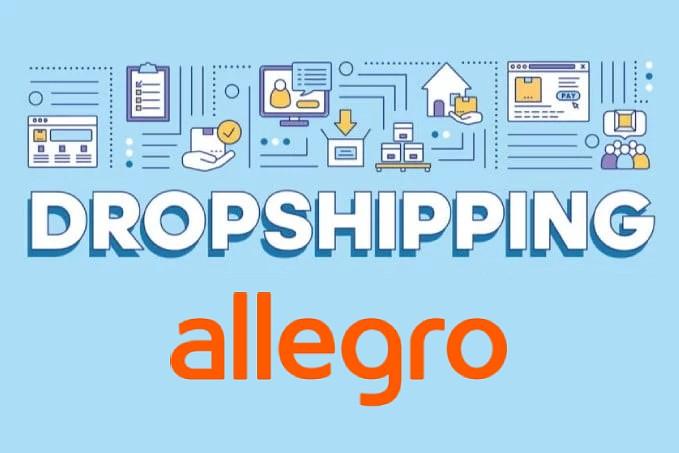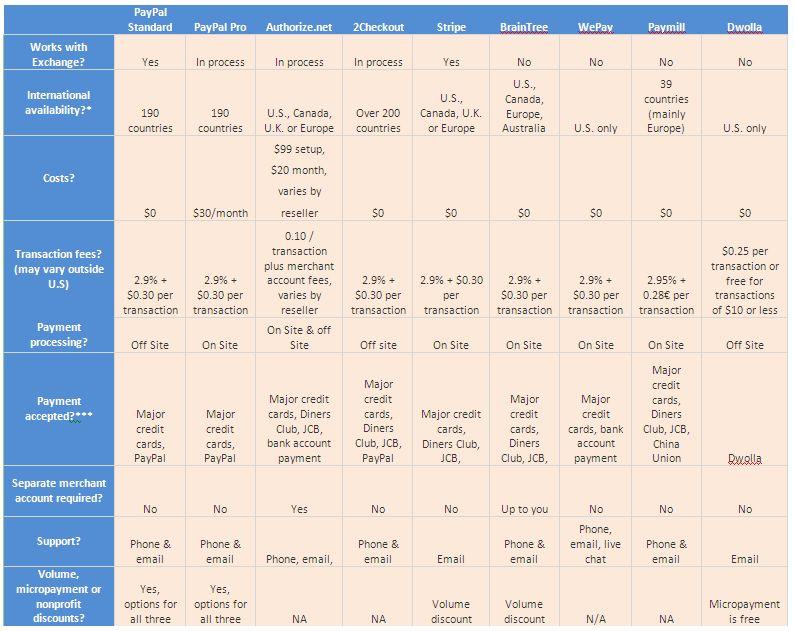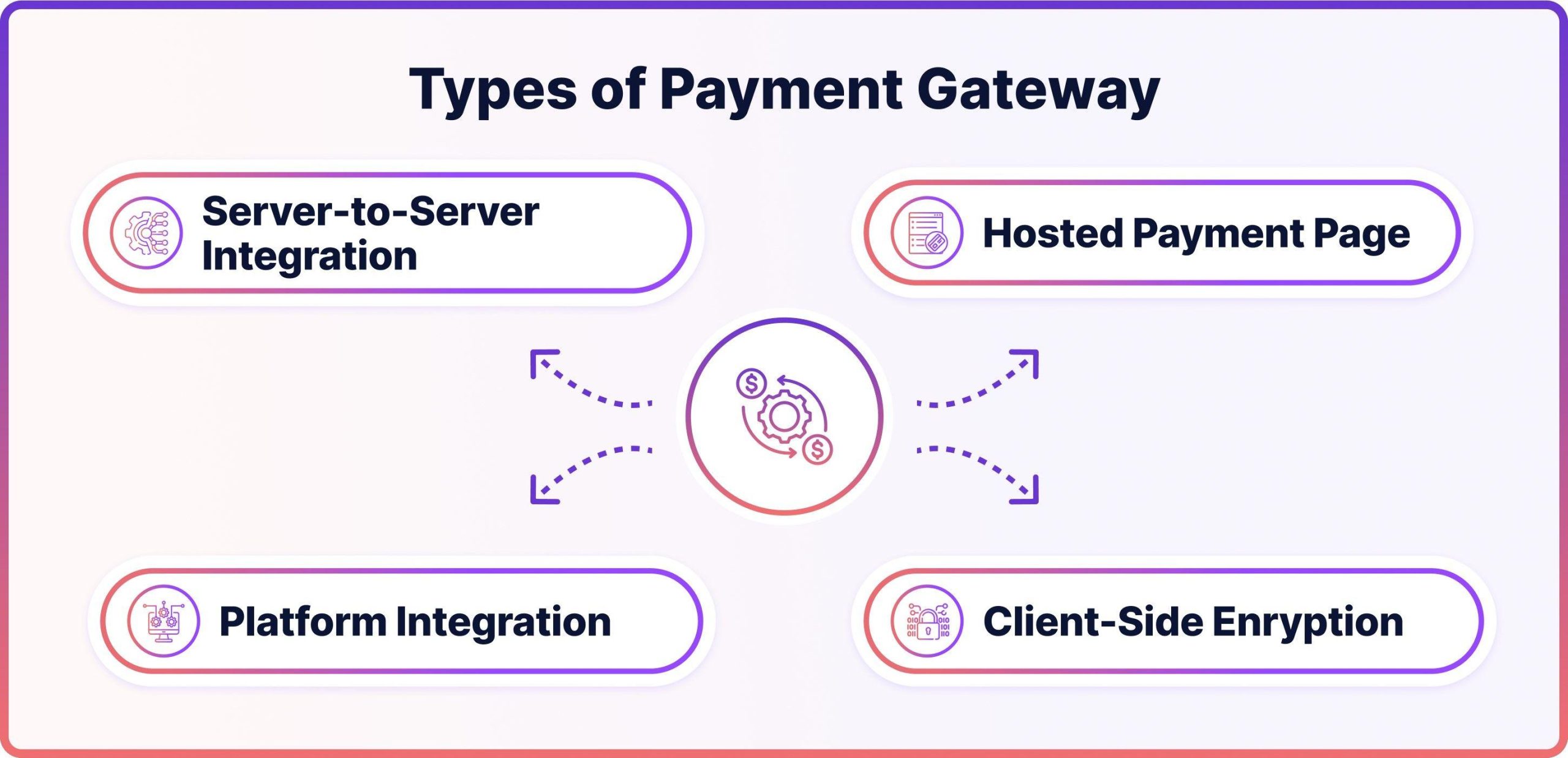Are you dreaming of starting your own online business but feel overwhelmed by the logistics? If so, you’re not alone! Many aspiring entrepreneurs are turned off by the thought of managing inventory, shipping products, and handling customer service. That’s where dropshipping comes in—a game-changer for anyone looking to dip their toes into the world of e-commerce without the hefty overhead costs. In this speedy guide, we’ll break down exactly how dropshipping works, showcasing its advantages and helping you understand why it might just be the perfect solution for your entrepreneurial ambitions. So, grab a cup of coffee, sit back, and let’s explore how you can start your own online store with minimal fuss and maximum potential!
Understanding the Basics of Dropshipping
Dropshipping is an innovative retail fulfillment method that allows entrepreneurs to run an online store without the complexities of managing inventory or handling shipping logistics. In a traditional retail model, a business owner purchases products in bulk, stores them, and ships them to customers. However, with dropshipping, the process is streamlined, making it easier for anyone to start an e-commerce business.
Here’s how it works:
- Supplier Partnerships: The first step in the dropshipping model is establishing relationships with suppliers or manufacturers who are willing to ship products directly to customers on behalf of the store owner.
- Product Listings: the store owner lists the supplier’s products on their online store, usually at a marked-up price to ensure profit margins. This can be done through various platforms, such as Shopify or woocommerce.
- Customer Orders: When a customer makes a purchase, the store owner receives the payment and then forwards the order details to the supplier.
- Shipping: The supplier takes care of packaging and shipping the product directly to the customer,while the store owner handles customer inquiries and service.
This model offers several advantages that make it appealing to budding entrepreneurs:
- Low startup costs: Since there’s no need to purchase inventory upfront, starting a dropshipping business requires significantly less capital.
- Flexibility: Business owners can operate from anywhere, as long as they have a computer and internet connection.
- Diverse Product Range: Store owners can offer a wide variety of products without the constraints of holding stock.
However, it’s crucial to understand that dropshipping is not without its challenges. Issues such as supplier reliability, shipping times, and quality control can impact customer satisfaction. To mitigate these risks, it is advisable to carefully vet suppliers and possibly order samples for quality assurance.
dropshipping presents a unique opportunity for entrepreneurs looking to enter the e-commerce space with minimal overhead.By understanding the ins and outs of this model, you can position yourself for success in the ever-evolving online marketplace.
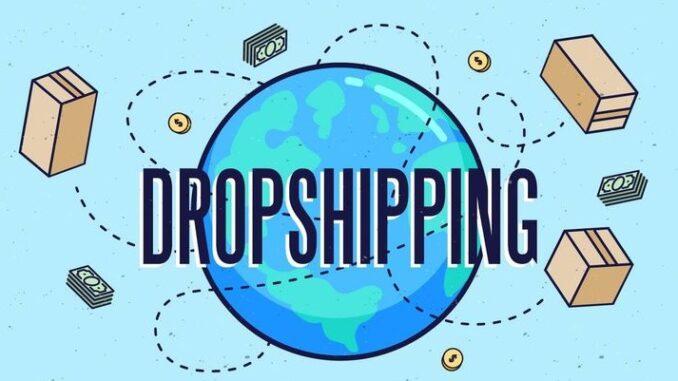
The Key Players in the Dropshipping Game
In the world of dropshipping, several key players work together to create a seamless shopping experience for consumers. Understanding these roles is essential for anyone looking to dive into this dynamic business model.
- Retailer: This is you, the entrepreneur who sets up an online store, selects products, and markets them to consumers. Your primary focus is on customer service and driving sales while maintaining a user-friendly shopping experience.
- Supplier: The backbone of the dropshipping process, suppliers hold inventory and fulfill orders on your behalf. They handle packaging and shipping, allowing you to focus on your marketing efforts.
- Customer: The end-user who browses your online store, makes purchases, and receives products. Understanding their needs and preferences is crucial for successful marketing and product selection.
Another essential component is the eCommerce platform. This is the digital storefront where transactions occur, and it plays a vital role in how you present your products. Popular platforms like Shopify, WooCommerce, and BigCommerce offer tools for inventory management, payment processing, and customer engagement.
Additionally, don’t overlook the importance of marketing specialists.Whether you hire someone or learn the ropes yourself, effective marketing strategies can significantly enhance your visibility. This includes SEO, email marketing, social media engagement, and targeted advertising—all designed to attract potential customers to your online store.
Lastly, it’s critically important to consider the role of customer service representatives.Excellent customer service is key to retaining customers and building trust in your brand. Providing timely support, answering queries, and resolving issues can make a ample difference in customer satisfaction and loyalty.
choosing the Right Niche for Your Dropshipping business
When embarking on your dropshipping journey, selecting the right niche is crucial. A well-chosen niche can set the foundation for a successful business, while a poorly chosen one can lead to frustration and wasted resources. Here are some key factors to keep in mind when narrowing down your options:
- Market Demand: Research trending products and consumer interests. Tools like Google Trends and social media can definately help you gauge what’s hot right now.
- Competition: Analyse your competitors in the niche. If the market is saturated,consider finding a sub-niche where you can stand out.
- Profit Margins: Calculate the potential profit margins for products in your chosen niche.High-ticket items can offer better profits, but also come with higher risks.
- Your Passion: Choose a niche you are passionate about. This not only makes the work more enjoyable but also equips you to connect better with your audience.
Once you have a list of potential niches, it’s essential to validate your ideas. Here’s how you can do it:
- Surveys and Feedback: Engage with your target audience through surveys or social media to understand their needs.
- Test the Waters: Consider starting with a small selection of products to see how they perform before fully committing.
- Online Communities: Join forums or groups related to your potential niche. This can provide insights and help you connect with potential customers.
To assist you further, we’ve compiled a quick overview of niche examples, their market potential, and average profit margins in the table below:
| Niche | Market Potential | Average Profit Margin |
|---|---|---|
| Eco-Friendly Products | High | 25%-40% |
| Pet Supplies | Growing | 15%-30% |
| Fitness Gear | High | 20%-35% |
| Home Office supplies | Trending | 10%-25% |
Remember, the right niche is not just about what is currently popular, but also about what aligns with your business goals and values. Take the time to analyze your options carefully, and you’ll be well on your way to building a thriving dropshipping business.
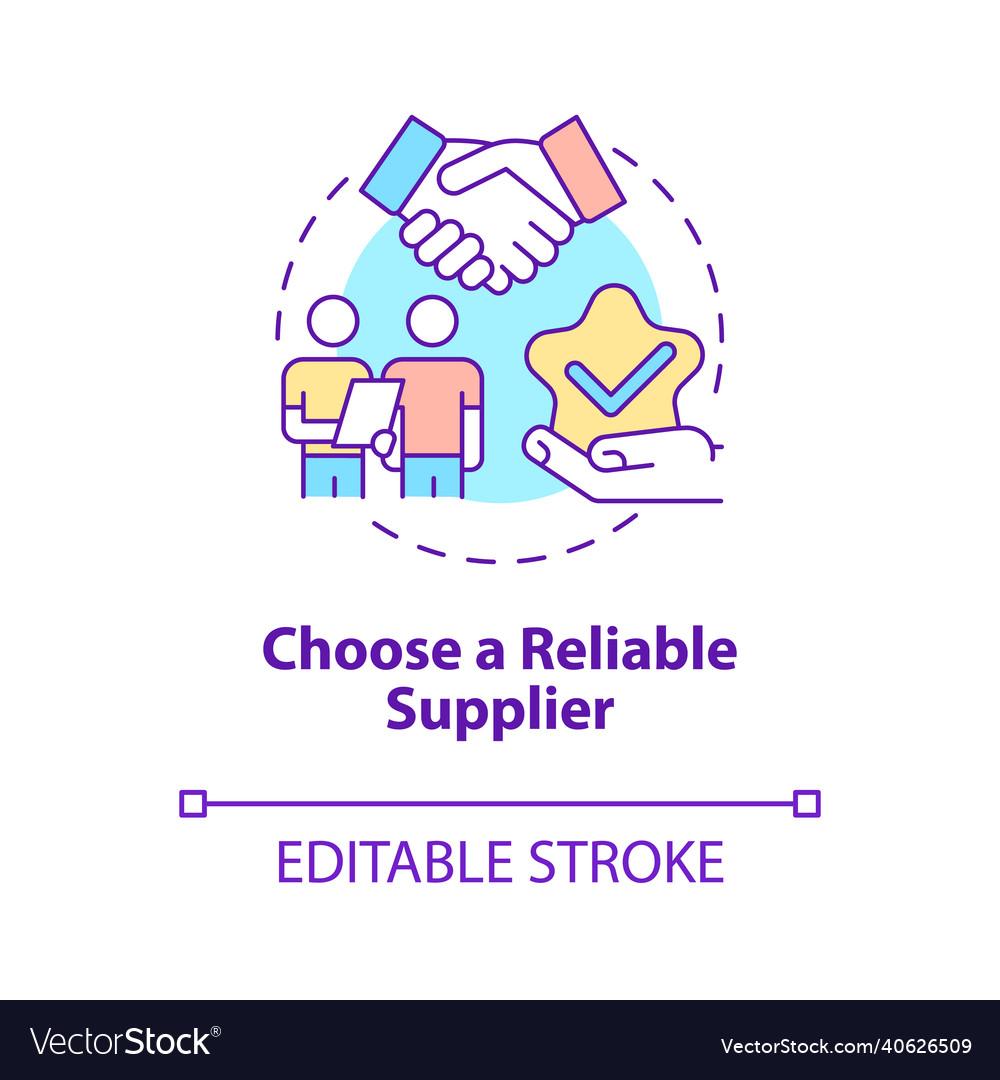
Finding reliable Suppliers to Partner With
Choosing the right suppliers is crucial for the success of your dropshipping business. A reliable supplier ensures that your customers receive their orders promptly and in good condition, which is essential for maintaining a positive reputation. Here are some key points to consider when searching for trustworthy partners:
- Research and Reviews: Start by looking at reviews and testimonials from other retailers who have worked with potential suppliers. Platforms like Trustpilot and Google Reviews can provide valuable insights.
- Product Quality: Always order samples to assess the quality of the products firsthand. This allows you to personally evaluate the merchandise before offering it to your customers.
- Interaction: A responsive supplier can make a significant difference. Ensure they are easy to contact and willing to answer your questions promptly.
- Shipping Times: Check their shipping policies and estimated delivery times. Delayed shipments can lead to unhappy customers,so it’s vital to partner with suppliers who can meet your fulfillment timelines.
To help you visualize the differences in supplier options,consider the following table showcasing key factors:
| Supplier | Product Quality | Shipping Time | Communication |
|---|---|---|---|
| Supplier A | High | 3-5 days | Excellent |
| Supplier B | Medium | 5-7 days | Good |
| Supplier C | High | 1-2 days | Very Good |
In addition,consider the following strategies to enhance your supplier relations:
- Build a Relationship: Establishing a good rapport with your suppliers can lead to better terms,pricing,and priority during high-demand seasons.
- Negotiate Terms: Don’t hesitate to discuss payment terms and minimum order quantities. A good supplier will be open to negotiations that can benefit both parties.
- Stay Updated: Regularly check in with your suppliers for updates on product availability, new offerings, or changes in shipping processes.
ultimately, taking the time to find and cultivate reliable suppliers will pay off in the long run. Not only will it help in delivering excellent customer service, but it will also streamline your operations, allowing you to focus on growing your business.
Crafting an Irresistible Online Storefront
Creating an online storefront that captures attention and drives conversions is both an art and a science. The first step in achieving this is to ensure that your website design is not only visually appealing but also user-friendly. Consider incorporating these essential elements:
- Clear Navigation: Make it easy for customers to find what they’re looking for with intuitive menus and search functionality.
- High-Quality Images: Use professional images that showcase your products from multiple angles to enhance desirability.
- Compelling Product Descriptions: Write engaging descriptions that highlight the features and benefits of each product,making them irresistible to potential buyers.
- Mobile Optimization: ensure your storefront is fully responsive, providing a seamless shopping experience on all devices.
Furthermore, the use of engaging colors and fonts can influence visitors’ perceptions of your brand. Choose a colour palette that resonates with your target audience and reflects your brand personality. Don’t underestimate the power of typography—select fonts that enhance readability while still conveying your brand’s voice. For example, a clean sans-serif font might work well for modern brands, while a classic serif font could lend an air of sophistication.
Don’t forget the importance of trust signals. Customers are more likely to purchase when they feel secure in their decision. Incorporating elements such as:
- Customer Reviews: Showcase testimonials and ratings to build credibility.
- Secure Payment Options: Offer multiple payment methods and display security badges prominently.
- Clear Return Policy: Make your return policy transparent, easing customer concerns about online shopping.
Lastly, consider the functionality of your storefront. Fast loading times and a smooth checkout process can significantly impact conversion rates. Use tools to analyze your site’s performance and identify areas for betterment. Implement features such as:
| Feature | Benefit |
|---|---|
| One-Click Checkout | Reduces cart abandonment |
| Live Chat Support | Enhances customer service |
| Wish Lists | Encourages future purchases |
By focusing on these critical elements, you can craft an online storefront that captivates visitors and converts them into loyal customers.The right design paired with a seamless shopping experience not only attracts but retains customers, paving the way for a successful dropshipping venture.
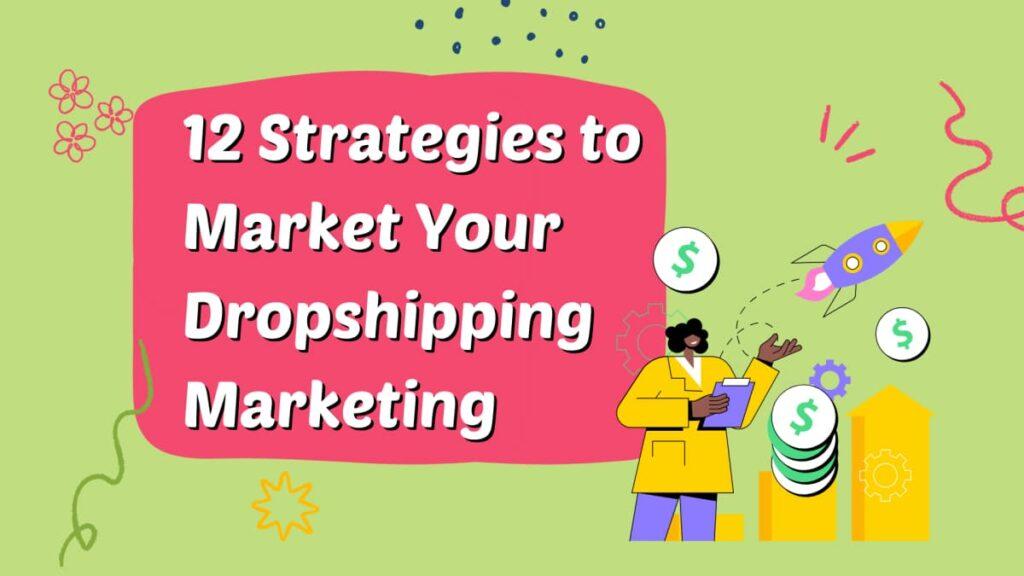
Mastering marketing Strategies for Dropshipping Success
In the dynamic world of e-commerce,dropshipping has emerged as a popular business model,enabling entrepreneurs to dive into retail without the heavy overhead of inventory management. Essentially, dropshipping allows you to sell products directly from suppliers to customers, eliminating the need for physical storage space and upfront inventory costs. But how do you truly leverage marketing strategies to ensure your dropshipping venture thrives?
First, embracing social media marketing is crucial. Platforms like Instagram, Facebook, and TikTok can become your best friends. By creating visually appealing content that highlights your products, you can engage with potential customers and build a community around your brand. Consider using:
- Engaging stories and reels to showcase your products in action.
- User-generated content to create authenticity and trust.
- Targeted ads to reach a specific audience based on their interests and behaviors.
Next, optimize your SEO strategies. Keyword research helps your online store rank higher on search engines, making it easier for customers to find you.Focus on long-tail keywords specific to your niche and incorporate them into your product descriptions, blog posts, and meta tags. This not only drives organic traffic but also positions your store as an authority in your field.
Another essential aspect is email marketing. Building a mailing list can have a profound impact on your sales. By offering incentives like discounts or exclusive content in exchange for email sign-ups, you can nurture your leads. Create segmented lists to tailor your messages for various customer groups, ensuring you provide relevant content that drives conversions.
analyzing your marketing efforts through tools like Google Analytics can definitely help you understand your audience’s behavior. By tracking metrics such as traffic sources, bounce rates, and conversion rates, you can fine-tune your strategies and allocate resources effectively.
| strategy | Benefit |
|---|---|
| Social Media Marketing | Builds brand awareness and customer engagement |
| SEO | Increases organic traffic and improves search visibility |
| Email Marketing | Direct communication and higher conversion rates |
| Data Analytics | Informs strategy adjustments for better performance |
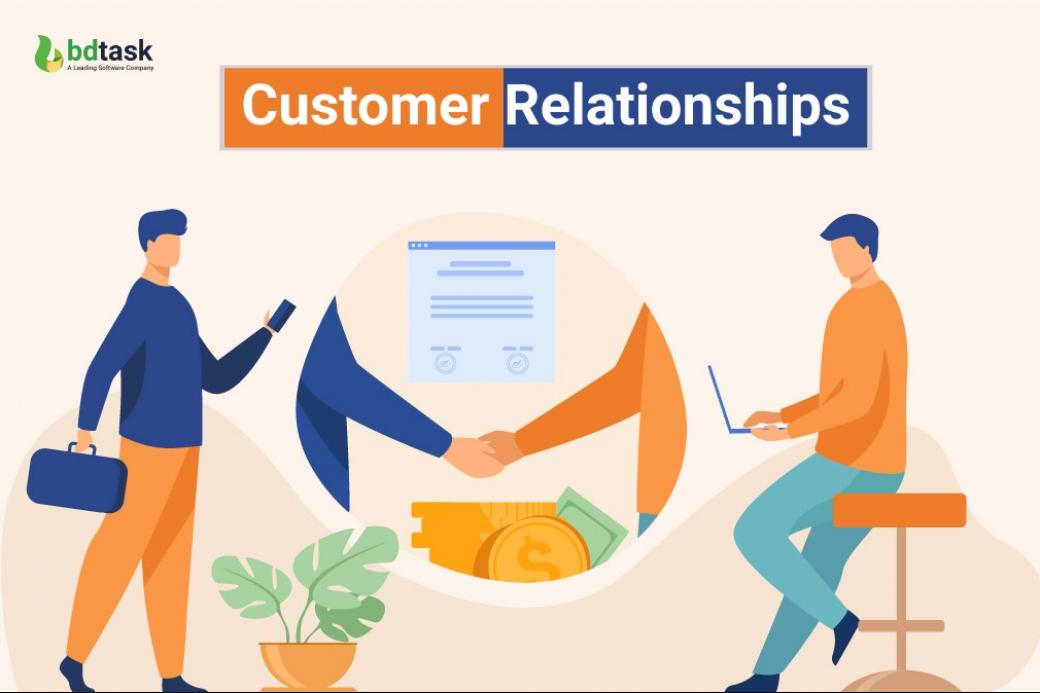
Managing Customer Relationships and Expectations
Effectively is crucial in the dropshipping business model. As you’re not handling the products directly, it’s essential to create a seamless experience that keeps your customers informed and satisfied. Here are some strategies to enhance your customer relationship management:
- clear Communication: Keep your customers updated about their orders, shipping times, and any potential delays. Timely notifications can significantly reduce anxiety and enhance trust.
- Set Realistic Expectations: Clearly outline shipping times and return policies on your website.Avoid overpromising and underdelivering—this can lead to negative reviews and lost customers.
- Personalized Interactions: Use customer names in emails and tailor your messages based on their shopping behavior. Personal touches can make your customers feel valued and more likely to return.
Utilizing a customer relationship management (CRM) tool can further streamline your processes. A robust CRM system can definitely help you track customer interactions, gather feedback, and analyze purchasing behavior. This data can be invaluable for personalizing your communications and marketing efforts.
Consider maintaining a FAQ section on your website that addresses common customer concerns. This can greatly reduce the number of inquiries and allow you to focus on providing excellent service.You can also include a feedback form to gather insights directly from your customers about their experiences.
| customer Expectation | How to Meet It |
|---|---|
| Fast shipping | Partner with reliable suppliers who offer quick fulfillment. |
| Easy Returns | Provide a clear and straightforward return policy. |
| Responsive Support | have a dedicated support team available through multiple channels. |
by fostering strong relationships with your customers and managing their expectations effectively, you can build loyalty in a competitive dropshipping landscape. Remember, satisfied customers are more likely to become repeat buyers and advocates for your brand.
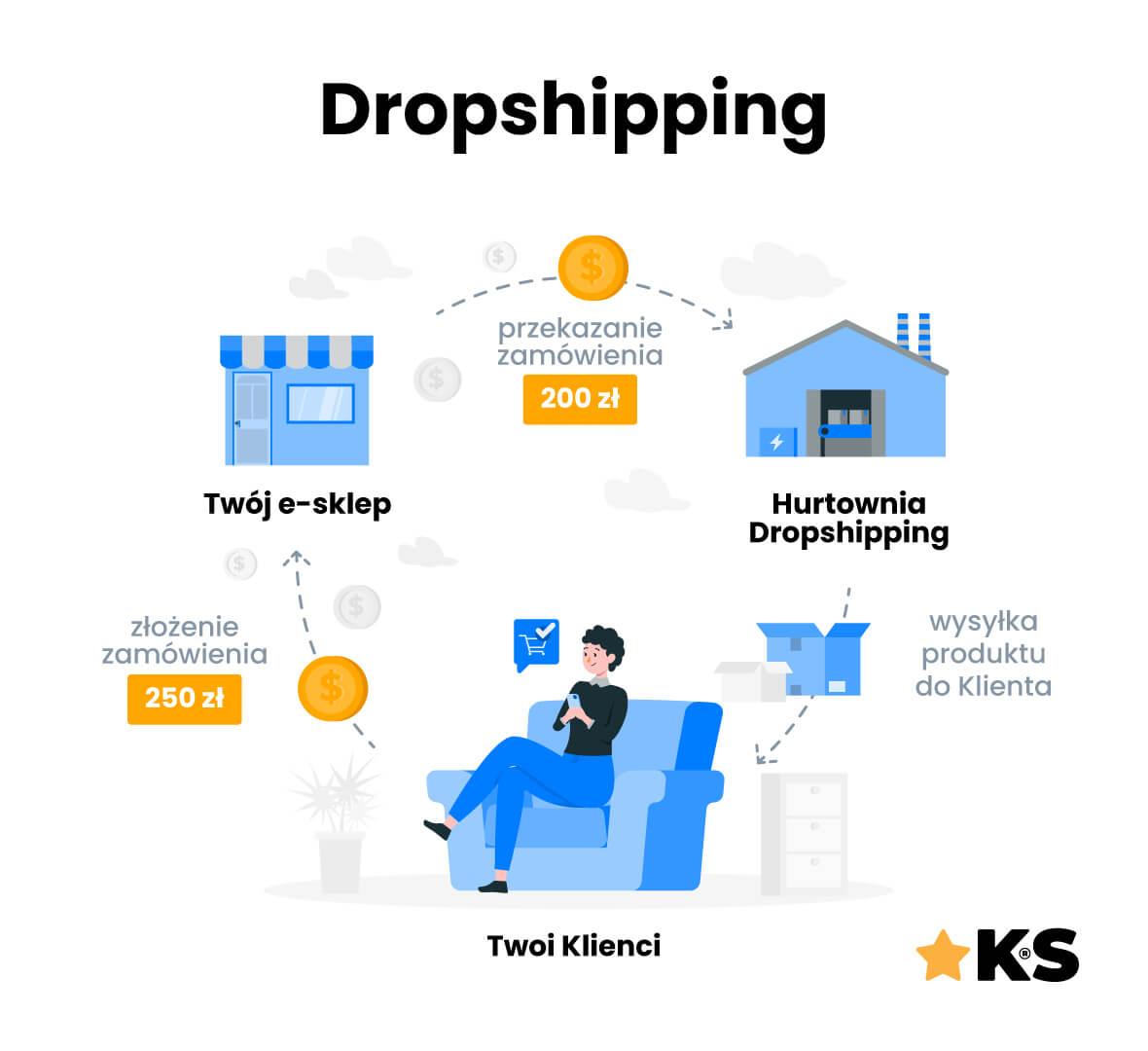
Navigating Legal and Financial Aspects of Dropshipping
When diving into the world of dropshipping, it’s crucial to understand the legal and financial implications that come along with this business model.Unlike traditional retail, dropshipping eliminates the need to hold inventory, but it doesn’t exempt you from compliance with various laws and regulations. Here’s what you need to know:
- Business Structure: Choose a suitable business structure (e.g., sole proprietorship, LLC, corporation). This decision impacts your taxes and personal liability. An LLC is frequently enough recommended for its balance of protection and flexibility.
- Licenses and Permits: Depending on your location, you may need business licenses or permits.Research your local regulations to ensure compliance and avoid potential fines.
- Sales Tax Compliance: understanding sales tax requirements is critical. Many states require you to collect sales tax on orders shipped to customers in that state. familiarize yourself with nexus laws and ensure you’re collecting the correct amount.
Financially, dropshipping can be appealing because of its lower overhead costs, but you must still manage your finances carefully. Here are some key financial aspects to consider:
- Cost of Goods Sold (COGS): Keep a close eye on your COGS, as this will directly affect your profit margins. Evaluate suppliers thoroughly to ensure you’re getting competitive pricing without sacrificing quality.
- Pricing Strategy: Establish a transparent pricing strategy that covers all costs (shipping,taxes,fees) while remaining attractive to customers. Consider using a pricing table to clarify your offers.
- Payment Processing Fees: factor in payment processor fees when setting your prices.These fees can eat into your profit, so choose your payment gateways wisely.
| Aspect | Considerations |
|---|---|
| Business Structure | LLC, Sole Proprietorship, Corporation |
| Licenses | Local and State Regulations |
| sales Tax | State-Specific Compliance |
| COGS | Supplier evaluation |
| Pricing Strategy | Transparent and Competitive |
| Payment Fees | Consider Payment Processors |
By understanding and managing these legal and financial aspects, you can set a solid foundation for your dropshipping business. This knowledge not only protects your business but also enables you to maximize your profits and maintain good standing with regulatory bodies. Take the time to do your research,and don’t hesitate to consult with professionals if needed.
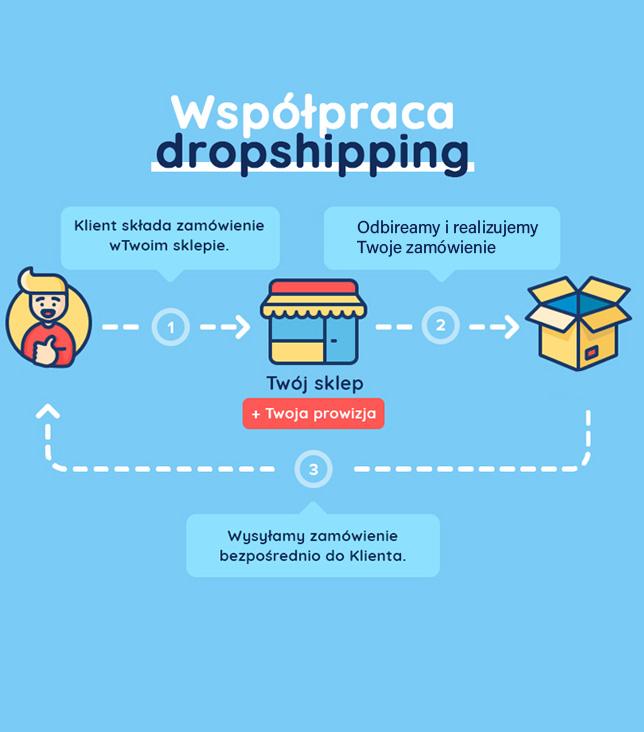
Scaling Your Dropshipping Business for Long-Term Growth
As your dropshipping business gains traction, scaling becomes essential for long-term sustainability and growth.To effectively expand, consider implementing the following strategies:
- Diversify Your Product Range: Offering a wider variety can attract different customer segments. Analyze your sales data to identify potential niches and trending products that align with your brand.
- Optimize Your Supply Chain: Build strong relationships with reliable suppliers. This ensures that you can handle increased order volumes without sacrificing quality or customer satisfaction.
- Enhance Your Marketing Efforts: invest in targeted advertising campaigns across various platforms. Utilize social media, email marketing, and search engine optimization to reach broader audiences effectively.
- Automate Processes: Implement tools that automate order processing, inventory management, and customer service. This will free up your time and reduce human error as you scale.
- Focus on Customer Retention: Repeat customers are more valuable than new ones. Create loyalty programs or special offers to keep your customers coming back.
When it comes to scaling, analyzing key metrics is crucial. Consider using a simple performance table to track your growth:
| Month | Total Sales ($) | New Customers | returning Customers |
|---|---|---|---|
| January | 5,000 | 100 | 40 |
| February | 7,500 | 120 | 55 |
| March | 10,000 | 150 | 75 |
Lastly,keep an eye on industry trends and be ready to adapt. The eCommerce landscape is ever-changing,and being proactive rather than reactive will position your business for success. By embracing these strategies, you can ensure that your dropshipping venture not only survives but thrives in the competitive marketplace.
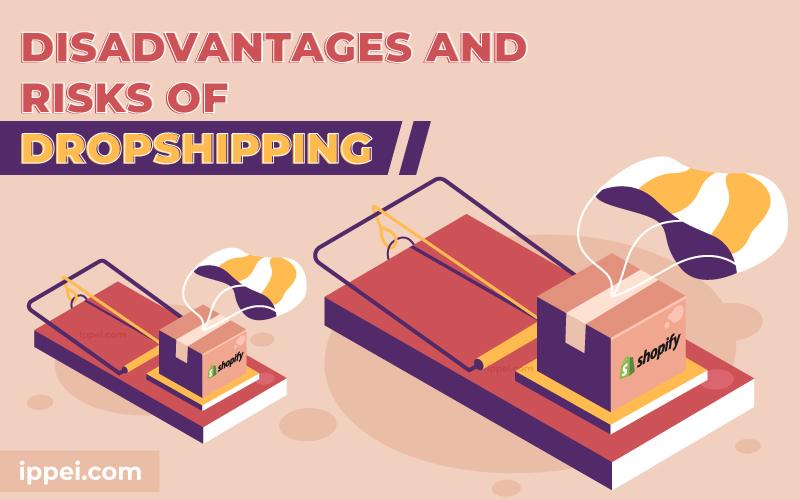
Common Pitfalls to Avoid in Dropshipping
Diving into the dropshipping business can be exhilarating, but it’s essential to navigate the waters carefully to avoid common pitfalls that can derail your success. Here are some traps you should watch out for:
- Choosing the Wrong Niche: Selecting a niche that is oversaturated or lacking demand can spell disaster. Research market trends and consumer interests before committing.
- Ignoring Supplier Reliability: Partnering with untrustworthy suppliers can lead to poor product quality and fulfillment issues. Conduct thorough research and establish strong relationships with reliable vendors.
- Neglecting customer Service: Excellent customer service is crucial for retaining customers. Failing to address inquiries or complaints can tarnish your reputation and lead to lost sales.
- Underestimating Shipping Times: Long shipping times can frustrate customers and result in negative reviews. Be transparent about delivery times and consider local suppliers to enhance customer satisfaction.
Another significant aspect is the financial management of your dropshipping business. Many new entrepreneurs overlook essential costs associated with running their store. Here’s a quick breakdown of potential expenses:
| Expense Type | Estimated Cost |
|---|---|
| Website Hosting | $10 – $30/month |
| Marketing and Advertising | $200 – $500/month |
| Transaction Fees | 2.9% + $0.30 per sale |
| Product Samples | $50 – $200 (one-time) |
Additionally, many dropshippers fail to optimize their online stores for search engines. Neglecting SEO can significantly limit your visibility and hinder growth. Focus on integrating relevant keywords, creating quality content, and optimizing product descriptions to improve your store’s ranking in search results.
don’t forget to track your metrics. Many entrepreneurs get caught up in the day-to-day operations and forget to analyze performance data. Use analytics tools to monitor sales, traffic sources, and conversion rates, which can provide insights into what’s working and what needs adjustment.
frequently Asked Questions (FAQ)
Q&A: How Does Dropshipping Work? A Quick Guide
Q: What exactly is dropshipping?
A: Great question! Dropshipping is a retail fulfillment method where a store doesn’t keep the products it sells in stock. Instead, when you make a sale, the item is purchased from a third party—usually a wholesaler or manufacturer—and shipped directly to the customer. Essentially, you act as a middleman, handling the sales and customer service while someone else handles the inventory and shipping.
Q: How do I get started with dropshipping?
A: Getting started is easier than you might think! First, choose a niche that interests you—something you’re passionate about can make the process more enjoyable. next, set up an online store using platforms like Shopify or WooCommerce. then, find reliable suppliers from directories like Oberlo or SaleHoo. Once you’ve got your store set up and products listed, you’re ready to start marketing!
Q: Do I need a lot of money to start dropshipping?
A: Not at all! One of the biggest advantages of dropshipping is that you don’t need to invest heavily in inventory upfront. You can start with a modest budget, focusing on creating a solid online presence and effective marketing strategies to attract customers. Keep in mind that while initial costs are low, you should still be prepared for expenses like website hosting, advertising, and transaction fees.
Q: What are the challenges of dropshipping?
A: Like any business model, dropshipping comes with its challenges. You may encounter issues like low profit margins,supplier errors,and managing customer expectations. It’s crucial to choose reliable suppliers and to maintain open communication with your customers. By being proactive and addressing potential problems before they arise, you can increase your chances of success.
Q: How can I stand out in a crowded dropshipping market?
A: Standing out is key! focus on a niche that you’re passionate about and build a brand around it. High-quality product images, engaging descriptions, and excellent customer service can go a long way. Additionally,leveraging social media and content marketing can help you connect with your audience and build a loyal customer base.
Q: Is dropshipping a sustainable business model?
A: Absolutely! Many entrepreneurs successfully run dropshipping businesses for years. The key is to stay adaptable: keep an eye on market trends, continuously refine your marketing strategies, and be willing to pivot if necesary. With dedication and the right approach, dropshipping can be both sustainable and profitable.
Q: What are the best platforms for dropshipping?
A: There are several great platforms out there, but Shopify is one of the most popular due to its user-friendly interface and extensive app ecosystem. Other options include WooCommerce for WordPress users, BigCommerce, and Wix. Each platform has its own strengths, so choose one that aligns with your goals and technical comfort level.
Q: Can I dropship internationally?
A: Yes, you can! Many dropshippers successfully sell to customers around the globe. Just be sure to choose suppliers who can ship internationally and understand any customs regulations or shipping times that may affect your customers’ experience.
Q: Is dropshipping right for me?
A: If you’re looking for a low-risk way to start an online business, dropshipping might be the perfect fit! It offers flexibility, the chance to test different products without a significant upfront investment, and the opportunity to work from anywhere. If you’re ready to put in the effort to learn and grow, dropshipping can be a rewarding venture!
Feel free to mix and match or expand on any of these responses to suit your article’s needs!
Future Outlook
dropshipping can truly be a game-changer for aspiring entrepreneurs looking to dip their toes into the world of e-commerce without the heavy overhead costs. By eliminating the need for inventory and allowing you to focus on marketing and customer service, it opens up a realm of possibilities for building your own online business.
Now that you have a clearer understanding of how dropshipping works, the key steps involved, and the potential pitfalls to watch out for, it’s time to take action! Whether you’re looking to launch your first store or refine an existing one, remember that success in dropshipping comes from continuous learning and adaptation.
So, why not start today? Dive into research, explore niches that excite you, and connect with reliable suppliers. The online marketplace is waiting, and your dropshipping adventure could be just around the corner. Embrace the challenge, stay committed, and who knows? You could be the next success story in the world of e-commerce. Happy dropshipping!

